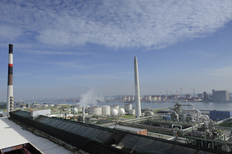- The new plant in Antwerp has an annual capacity of 90,000 metric tons.
- The investment volume for the plant is EUR 75 million.
- The plant will gradually increase capacity utilization in the coming months.
- Caprolactam, a key intermediate, is produced nearby and used in the new plant.

New Plant in Antwerp
Specialty chemicals company LANXESS has commenced operations at its new polyamide plastics plant in Antwerp, Belgium. The facility, designed for an annual capacity of around 90,000 metric tons, represents an investment of EUR 75 million. The plant's capacity utilization rate will be gradually increased in the coming months following the initial start-up phase.
Integration with Existing Facilities
All plastics produced at the Antwerp plant will be processed within LANXESS's global network of compounding facilities into final Durethan-brand products. The new plant is located near the company's existing caprolactam facility, a key intermediate for plastics manufacturing. This proximity allows LANXESS to increase its captive use of caprolactam.
Reinforcement and Customization
Post-polymerization, the plastics are reinforced with materials such as glass fibers to enhance their properties and meet customer requirements. The glass fibers used for this purpose are also produced at a LANXESS facility in Antwerp.
Automotive Industry Applications
The automotive industry is a primary customer for LANXESS's High Performance Materials (HPM) business unit. The lightweight plastics produced help reduce vehicle weight, fuel consumption, and emissions. These materials are used in various automotive components, including engine applications, door structures, pedals, front ends, and cockpit crossmembers. Additionally, they offer production savings and ease of assembly for manufacturers and suppliers.

